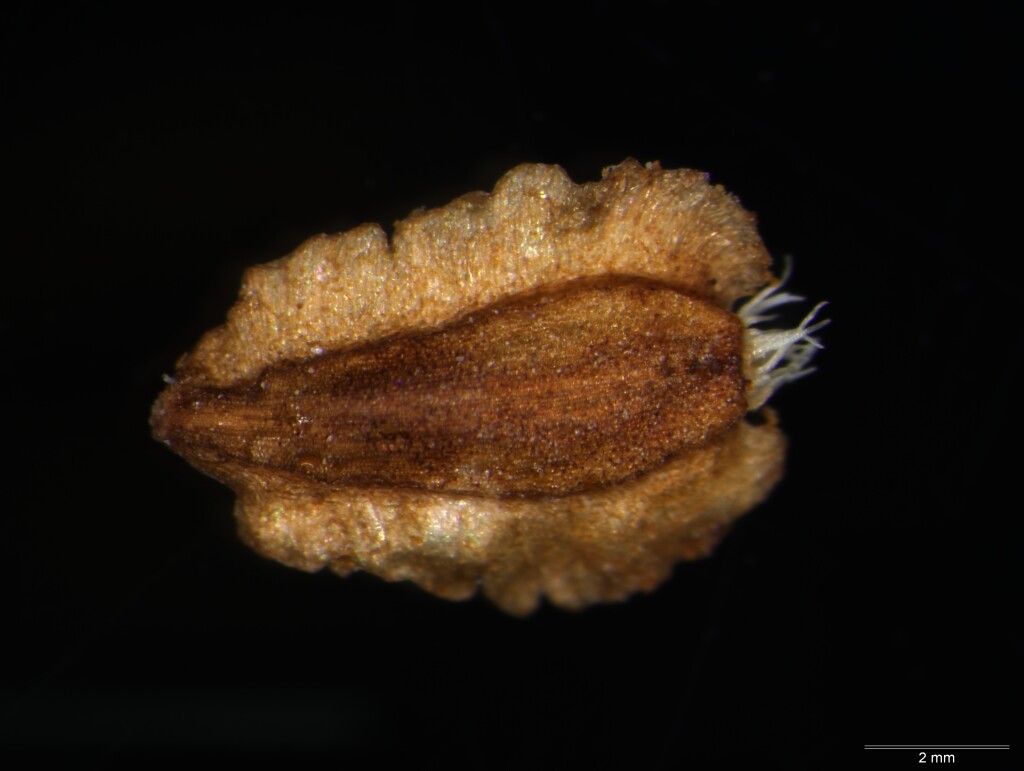Brachyscome barkerae
P.S.ShortClumping, sometimes mat-forming herb. Leaves mainly in basal clusters, mostly or always entire (some 1–6-lobed), c. linear, 1–4.5 cm long, 1.8–3.5 mm wide, mostly glabrous but sometimes with scattered eglandular or glandular hairs, margins scarious, bases dilated. Peduncles 1 per tuft, 5–20 cm long, shortly glandular-hairy (rarely glabrous), with 2–16 linear, entire or few-lobed leaves; bracts c. 20–30, 1–2-seriate, c. equal, narrowly elliptic or oblanceolate, 5.5–9 mm long, 1.1–2 mm wide, thin, mainly green but with narrow scarious margins and apex, apically acute to obtuse and purplish, glabrous except for minute glands on margins and sometimes a few hairs at base; ligules c. 12–15 mm long, white. Cypselas widely obovate, 2.3–2.9 mm long, 1.5–2.5 mm wide, uniformly brown or body darker than the wings; lateral faces each with 2 longitudinal ridges, short tubercles in a narrow to broad central line, eglandular hairs apparently absent (at least in mature cypselas), glandular hairs sometimes present; wing 0.5–1 mm wide, more or less entire to distinctly toothed, glandular hairs often present; pappus c. 0.4–0.5mm long, exceeding the apical notch. Flowers Dec.–Jan.
Wim, Gold, VAlp. Known in Victoria only from moist, peaty ground on the Snowy Range near Mt Howitt and on Mt Bogong.
This taxon differs from Brachyscome tadgellii in typically having glandular hairs on the peduncle, mostly entire leaves, and in the apparent absence of eglandular hairs on the mature cypsela. A few specimens from the Snowy Range have essentially glabrous peduncles, but occur intermixed with typical plants with, glandular-haired peduncles. They are included here with B. barkerae, but further investigation is warranted to determine the nature of this variation.
 Spinning
Spinning
